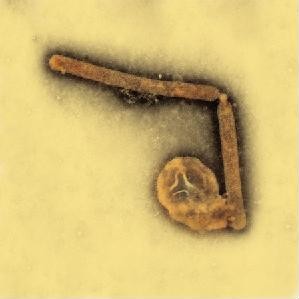
CDC/CYNTHIA GOLDSMITH/JACKIE KATZH5N1 virus: transmitted exclusively by birds, it worries the WHO CDC/CYNTHIA GOLDSMITH/JACKIE KATZ
In 1918, when the Spanish influenza reached Brazil, killing thousands of people, there were few measures to be taken. “Many companies invested in making coffins; Light ( the electrical utility ) rented trams for carrying corpses; the Municipal Chamber approved the construction of the Lapa cemetery”, says Isaias Raw, the president of the Butantan Institute Foundation. Now, when a new pandemic – avian flu – is emerging as a threatening specter, the situation is different, and all over the planet measures are already being taken to face up to it.
In Brazil, the Butantan Institute begins to produce, in March, the first doses against the bird flu virus, the H5N1, from the strains sent by the World Health Organization (WHO). The target is to make 20 thousand doses of vaccine already in 2006, which can be used in the case of a pandemic of the disease. The virus is transmitted exclusively by birds and does not propagate easily by contact with humans, in spite of over a hundred cases and several deaths already having been registered, particularly in Asia. The great fear is that the H5N1 may exchange genetic material with the Influenza virus, originating a new strain, and this one would be highly contagious.
The first vaccines produced by Butantan will be used in testing with animals over 21 days. Next, and for an identical period of time, they will be applied to humans.
The vaccines for the tests will be produced in a pilot laboratory adapted to guarantee security in the manipulation of the strains.
In May, the works will be concluded of the new factory where vaccines will be generated vaccines against the Influenza virus, immunizing agents against rotavirus, HPV and hepatitis B, amongst others, with a capacity for producing 20 million doses of vaccine a year. There too will be installed the large scale manufacturing unit of the vaccine against avian flu.
The new factory cost R$ 18 million for the State of São Paulo and R$ 34 million for the Ministry of Health. “The major part of the equipment is now in storage and will be installed from June onwards”, Raw discloses. Three of the five centrifuges that will be used both in the production of vaccines against both the Influenza virus and HP5N1 have now arrived.
One of the great raw materials in the production of the vaccine – fecundated egg yolk – has also been guaranteed. “We have now met with the major Brazilian producers, who have undertaken to supply something like 20 million eggs over the months of October and November this year”, says Raw.
Multiplication of vaccines – The tests are not exactly going to measure the effectiveness of the product in fighting avian flu, but the quantity necessary for immunization, since the technology for producing this vaccine will be the same as used in the creation of vaccines against the Influenza virus, transferred by Aventis.
In the case of the vaccine against the H5N1, the Butantan intends to adopt a strategy tried out successfully in the case of the Influenza: the use of an adjuvant – as a replacement for aluminum hydroxide – that will make the fractioning of the doses possible. “This adjuvant makes it possible to use 1/4 to 1/8 of the dose per person and the multiplication of the number of doses available”, Raw explains.
“We did this in tests with the virus of the A type and it worked.” Besides increasing the supply of the vaccine, the measure is going to make the sale price of the product cheaper. Raw does not believe in the possibility of a pandemic of avian flu. “That is merely a supposition, not least because we are at the end of the migratory chain of the birds, which starts in the Far East”, he ponders. But if the virus starts contaminating humans, some sporadic vaccination will have to be done, associated with measures to circumscribe the cases, to prevent contagion.
Republish
